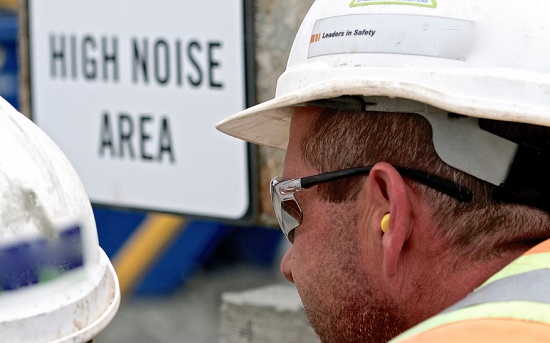
While reviewing the many factors that go into your career choice, we bet that your long-run hearing health is fairly low on the priority list—if it’s there at all. We understand.
And even though we don’t think that your future ability to hear should dictate your career choice, we do think you should be mindful of the risk—so that you can incorporate appropriate hearing protection and abide by the best habits to preserve your hearing.
As reported by the CDC, work-related hearing loss is one of the most prevalent work-related health problems in the US. Twenty-two million individuals are exposed to hazardous noise levels on the job, and a projected $242 million is expended annually on worker’s compensation for hearing loss.
So this isn’t a modest concern; the personal and social consequences are tremendous.
If you choose to pursue one of the following eight career paths—or currently work in one—take additional precaution to look after your hearing.
Here are 8 of the loudest industries.
1. Military – Practically all firearms can generate 140 decibels (dB) of noise. This is a great deal above the safe threshold of 85 dB, and has the potential to produce instant and irreversible hearing damage. Explosions and other sounds of combat add to the danger. This is why hearing loss and other hearing problems represent the most widespread injuries for veterans.
2. Music – Live shows can reach over 110 decibels, exposing musicians to hours of continuously damaging noise. That explains why research has revealed that musicians are four times more likely to experience noise-induced hearing loss—and 57 percent more likely to suffer from tinnitus—than other people.
3. Manufacturing – As reported by the Bureau of Labor Statistics, hearing loss is the most commonly documented work-related illness in manufacturing. Manufacturing equipment can reach decibel levels of well over 100.
4. Carpentry – Similar to manufacturing, carpenters use equipment that can reach hazardous decibel levels. A power saw alone can reach 110 dB.
5. Aviation – A jet take-off at 25 meters registers at approximately 140-150 decibels. The decibel level decreases as distance increases, but aircraft pilots and airport workers should protect against the noise.
6. Emergency Response – Ambulance and fire-engine sirens can produce decibel levels of over 130. In fact, a group of firefighters has recently taken legal action against a siren manufacturer after suffering from hearing loss on the job.
7. Farming – Some tractors and farming machinery can reach well over 100 decibels. Agricultural workers are encouraged to keep machinery running smoothly, to take periodic breaks from the noise, and to use hearing protection.
8. Racing – The sound of a single race car can reach over 120 decibels, and a race in full action can reach 140. Participants, fans, and employees at racing events are all at an increased risk for developing hearing loss.
Keep in mind, prolonged exposure to any noise above 85 decibels heightens your risk for developing hearing loss. If you find yourself in a high-volume job, take these three safety measures (if you can’t stay away from the source of the noise):
- Increase your distance from the sound source when feasible
- Take routine rest breaks from the sound to limit time of exposure
- Use custom earplugs to limit volume
Taking these three simple steps (specifically # 3) will allow you to pursue the career of your choosing without the need to compromise your ability to hear in the future—because wearing earplugs now is better than wearing hearing aids later.
